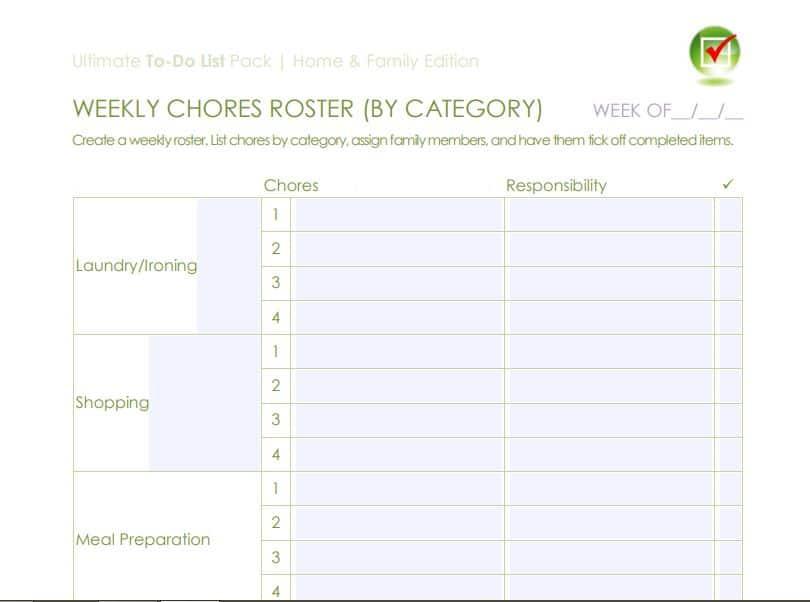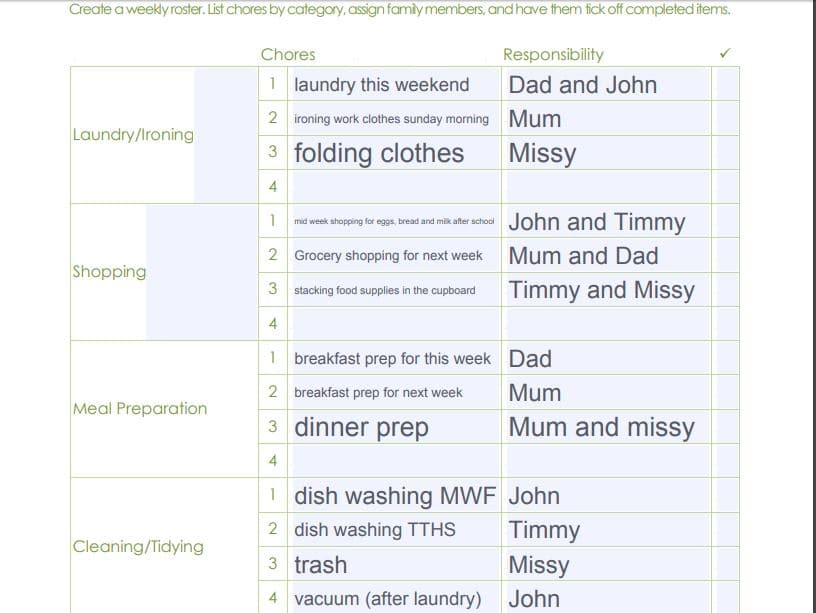Whenever your day ends, you might find yourself reflecting on the stresses of daily life.
Stress from work and at home can affect a person’s well being and the family as a whole.
Even washing the dishes can start an argument or some misunderstanding between spouses and their kids if stress is a factor. Arguments over chores can slowly drive people to fight and strain relationships. Some of you may think that such arguments are shallow, but it happens every day.
The unequal distribution of chores contributes to 30% of divorces. If one person is doing more than the other, that person’s quality of life can go down. Grudges formed because of unfair workloads are not worth the aggravation.
Try to divide up chores equally – it’s better for your relationship! Laundry, cleaning, grocery shopping, vacuuming and other chores are done on a regular basis. Some people have no issues doing them and some find it a nuisance, but there should be a balance of responsibilities to make it work.
If there are kids older than 5 years old, they should learn some light household chores. Making their bed every morning is a good start. If they are between 10-13 years old, the kids should know how to vacuum, put out the trash and wash the dishes. If you have teenagers, buying some groceries can lighten the burden, or they can clean the car once a week. They can also help declutter the house.
Dividing the Family Chores
Each family is unique and will have their own solution when dividing house chores. Below are some tips that can help you to divide chores and get started.
1. Go For A Team Approach
Couples with kids are the best at teamwork because each parent knows the big picture and the overall needs of the household. Make a list of regular chores and frequent activities that need to happen in the house. This might include cooking, cleaning, washing the car, etc. Teenagers especially should have their own cleaning responsibilities. Assign who will clean the table, do the dishes for the night and who takes out the trash. These simple household chores will teach them how to be responsible and how to help each other.
2. Take Turns
Take turns each day or each week for certain household chores. This will teach everyone in the household how to do each chores and it doesn’t get so boring doing the same thing every time. But make sure that each turn is fair. For example, for a certain week, your other half will take care of the laundry, grocery shopping and taking the kids to school and vice versa. Check who is responsible for a certain task and see if one family member is doing more than the others.
3. Gender Has Nothing To Do With Chores
Your kids will likely say that this task is just for girls and this task is just for boys. Everyone needs to learn something new or a variety of skills. Teach your kids how to do these skills and how to be responsible and they will know the value of equality and fair work.

4. Keep It Fair
The goal of dividing each chore between family members is to be fair and to make it feel like they are being supported by the other family members. Make a list of the division of chores (we’ll show you how to do this below) and take a look. Give feedback and talk about any unfair chore distribution.
5. Make A Chores Roster
Have a to-do list that shows each task for each family member. Schedule each task for each member and make them responsible for doing their chores. You can write it on a piece of paper, a chart, on a calendar or on a whiteboard. You can also download and print a free and interactive Weekly Chores Roster (21.08). This to-do list will give you a list of chores by category where you can assign family members and tick off the completed items.
How To Use The Weekly Chores Roster (21.08)
Step 1: Download the Weekly Chores Roster PDF
The Weekly Chores Roster (21.08) is one of our most popular free interactive productivity lists. Click here to download the Weekly Chores Roster PDF
Step 2: Choose How You Use The Weekly Chores Roster
You can use the to-do list in two ways:
- Click on the Weekly Chores Roster (20.18) in the PDF list and print it out.
- Click on Weekly Chores Roster PDF and type your tasks in the interactive list. Each task category is divided by chores and responsibility where you can write the name of the family member assigned to it.
- Save the PDF once you’re done and email it to your family members or make sure it’s easy to find on the home computer.
Step 3: Fill In List
Write or type in the names and the chores for each category and tick off every completed task.
Visual Sample of The Weekly Chores Roster
Below is a screenshot example of the interactive Weekly Chores Roster


All To-do lists are beautifully laid out and fully interactive – type directly in the lists, search and save. Or simply print and write directly on the list if you prefer. All of our To-do lists work with the free Adobe PDF Reader Click on the button below to get started.



Wow!!!What an absolutely fantastic post! I’m truly grateful for you sharing such valuable content with us. It’s incredibly insightful and inspiring. Thank you.